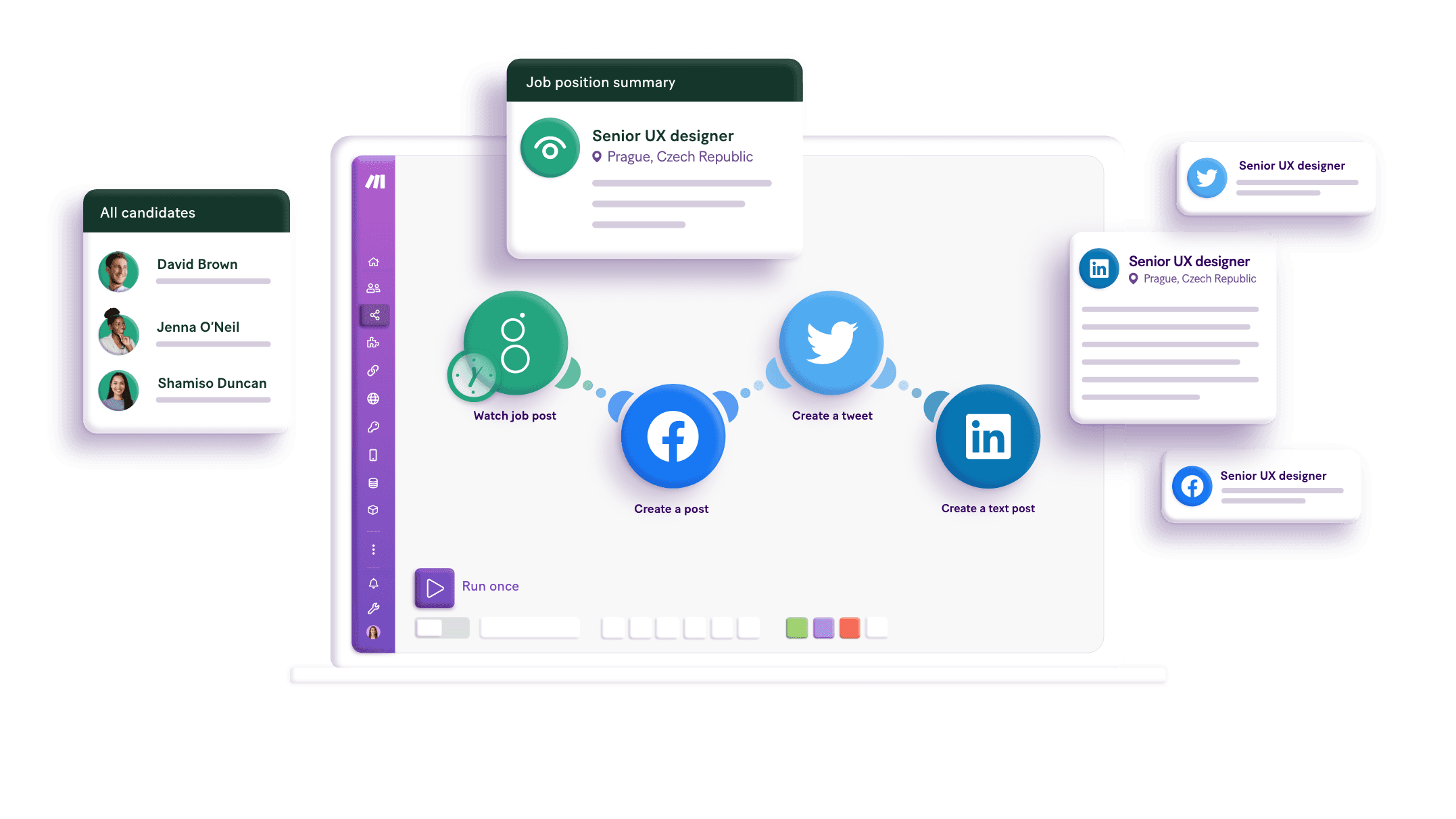Connect GitHub and Trello integrations
Trusted by thousands of fast-scaling organizations around the globe
Automate your work. Build something new.
Just drag and drop apps to automate existing workflows or build new complex processes. Solve problems across all areas and teams.

Build your GitHub and Trello integrations.
Integrate GitHub and Trello through the Make platform by configuring GitHub repositories to automatically update Trello boards whenever a new pull request is made. This integration aligns project management and development by minimizing manual tasks, enabling automatic status updates, and improving operations. With GitHub as a trigger and Trello as an action, you enhance efficiency and collaboration by adapting workflows to meet project demands.
Adds assignees to an issue or pull request.
Adds labels to an issue or pull request.
Adds an existing label to a card.
Adds a selected member to a card.
Adds an attachment to a card.
Archives or unarchives a board.
Archives or unarchives a card.
Archives or unarchives a specific list.
Assigns a specific member to a board.
Popular GitHub and Trello workflows.
Explore GitHub and Trello integration. Improve collaboration, track projects effectively, and enhance workflow efficiency with automated updates and insights.
How to setup GitHub and Trello in 5 easy steps
Log into Make
Begin by accessing your Make account to prepare for setting up connections.
Decide GitHub connection method
Choose between using OAuth or a token to connect GitHub, as each requires different steps.
Authorize GitHub access
For OAuth, add a GitHub module and authorize to complete the connection securely.
Start connecting Trello
Add a Trello module in Make to initiate the connection with Trello.
Authorize Trello access
Login to Trello if needed and confirm access to finalize the connection.
Improve workflow with GitHub and Trello integration for real-time sync
Discover effective issue management and better collaboration by integrating GitHub and Trello using the Make platform. Automate updates, reduce manual tasks, and improve project tracking efficiency.
Automatically sync issues between GitHub and Trello, ensuring up-to-date tracking and management.
Facilitate communication and task visibility across development and project management teams with synchronized updates.
Reduce manual data entry by auto-creating tasks and issues in both platforms, saving time and effort.
Receive instant notifications and updates across platforms by automating events and status changes.
FAQ
How it works
Traditional no-code iPaaS platforms are linear and non-intuitive. Make allows you to visually create, build, and automate without limits.







